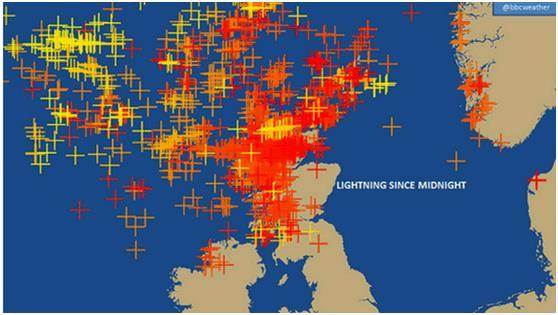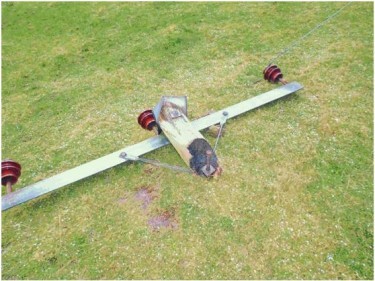This is the astonishing map of 5,000 lightning strikes across the north during the weather bomb.
An analysis of the network by Scottish Hydro Electric Power Distribution (SHEPD) shows that there were more than 104 strikes every hour at the height of the storm.
Some of the most damaging strikes were on the Western Isles and the Highlands.
Despite the gale force winds, and waves as tall as a six storey building, it was lightning which caused the most damage to the electricity network.
On Skye lightning bolts struck six wooden poles on the transmission network, causing region-wide power loss across the Western Isles on two occasions.
Where lightning struck equipment directly it added to the time it took to restore power to customers because new equipment had to be installed; and the task made that much harder with the combination of gale force winds, heavy rains and snow showers.
Alan Broadbent, director of engineering at SHEPD explained: “We prepared for the storm with hundreds of additional staff and resources. We knew that lightning would be a feature of this so-called weather bomb but predicting the intensity and frequency of strikes is almost impossible.
“We have equipment that can protect against lightning strikes, however, every so often a strike is too intense for even the most advanced level of protection.”

